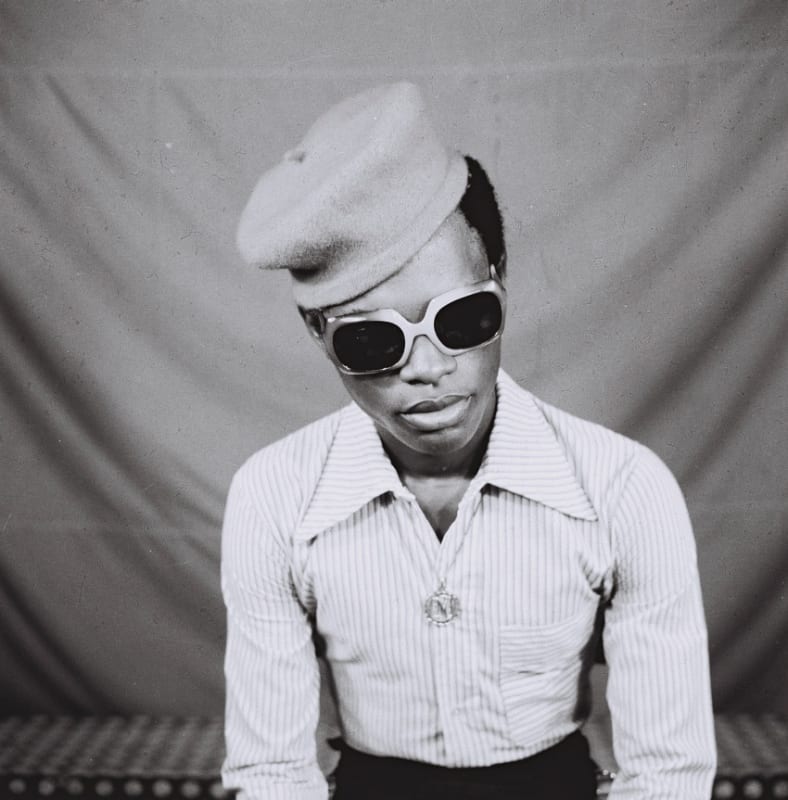African Spirits, currently on view at Yossi Milo Gallery in New York, presents an astutely and carefully crafted panoply of African photography, conveying the mastery and evolution of a bold and-I would add-fly visual vernacular. Juxtaposing approximately sixty-five works from the 1950s to the early 1980s with contemporary pieces by artists across the African diaspora, the exhibition initially overwhelms. Modern prints of black-and-white portraits seemingly clash with the yellowed, aged edges of vintage prints from both celebrated and little-known studios. The image sizes vary, pulling the viewers toward and away from the faces, clothing, and postures of their subjects. But who are these people?
Sidibé's contact sheets ARROSAGE DES TROIS, ADMIS NIARELA, 28-9-68 (1968) and Nuit du 18-19-11-69 (1969) embody the exhibition's impulse toward quotidian delights. In her book Listening to Images, Black feminist scholar Tina M. Campt defines the quotidian as "a practice honed by the dispossessed in the struggle to create possibility within the constraints of everyday life." These images are fragmented archives of the subjects at their best, showing up and showing out on the dance floor, embracing the moment and one another. While the quotidian is not spectacular, it is special. African subjects fashioned agency in front of the camera and in everyday life. Hugo's large-scale photograph Mimi Afrika, Wheatland Farm, Graaff-Reinet (2013), from the series Kin, amplifies the intimacy of Sidibé's smaller vintages. Hugo captures an older African woman adorned in a pink collared shirt and ornate gold-print headscarf. Most would see her skin's texture and the beauty in her naked wrinkles as the photograph's punctum. However, I see the few locks of her hair that she has shed, subtle kinks sitting here and there atop her shirt. The photograph is immaculate in its presentation, yet especially beautiful in its mundanity.
Similarly poignant, one of the photographs from the lesser-known Studio Degbava depicts a woman throwing her head back in ecstasy. We cannot see her face. To get to know her joy, one must step in close. Arms akimbo, with her hands cinching her dress, she draws attention to her shoes. Left foot turned out, proud and feeling herself. What does it feel like to escape at just the moment of capture? Perhaps like this. Muholi and Mahape's beaded portrait Somnyama Ngonyama (2019) continues this conversation of expansive feeling. Similar to Black American artist Mickalene Thomas's Din, une très belle négresse #1 (2012), Muholi and Mahape employ a plethora of cultural artifacts and practices, suggesting that paint and print are no longer enough to communicate the fabulosity and complexity of the Black subject.
The camera's introduction to the African continent has fashioned a visual vernacular that persists even as it has morphed from the commercial photo studio of the '60s and '70s into the cross-cultural collaborations of today. African Spirits captures the specific aesthetics and ambiguities of African selfhood. We can look to the images of Fosso, Sidibé, their contemporaries, and their successors to access the worlds their subjects crafted in the aftermath of violence, migration, or political independence. Most importantly, we can bear witness to who these subjects decided to become.
African Spirits is on view at Yossi Milo Gallery, New York, through August 23, 2019.
